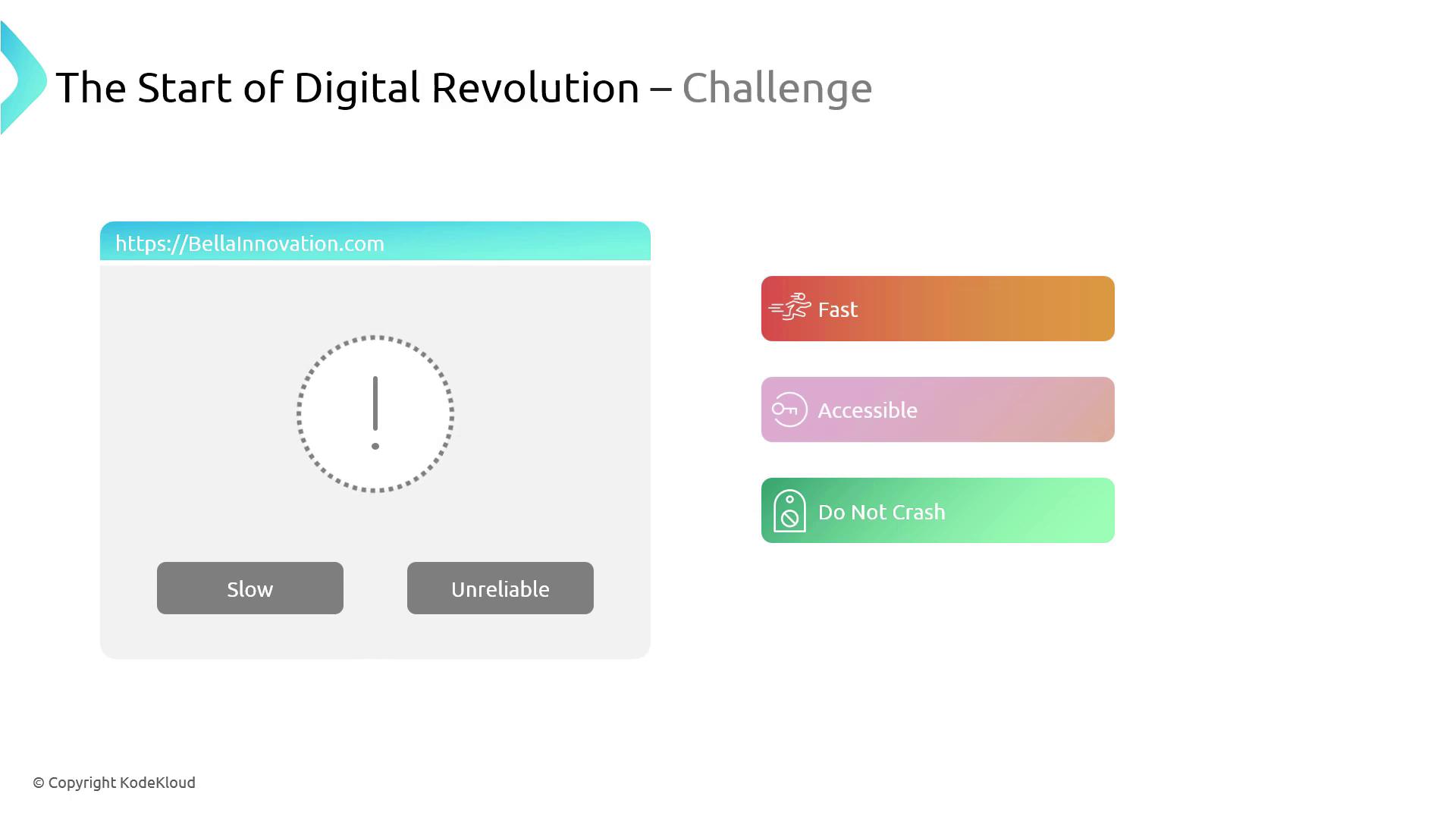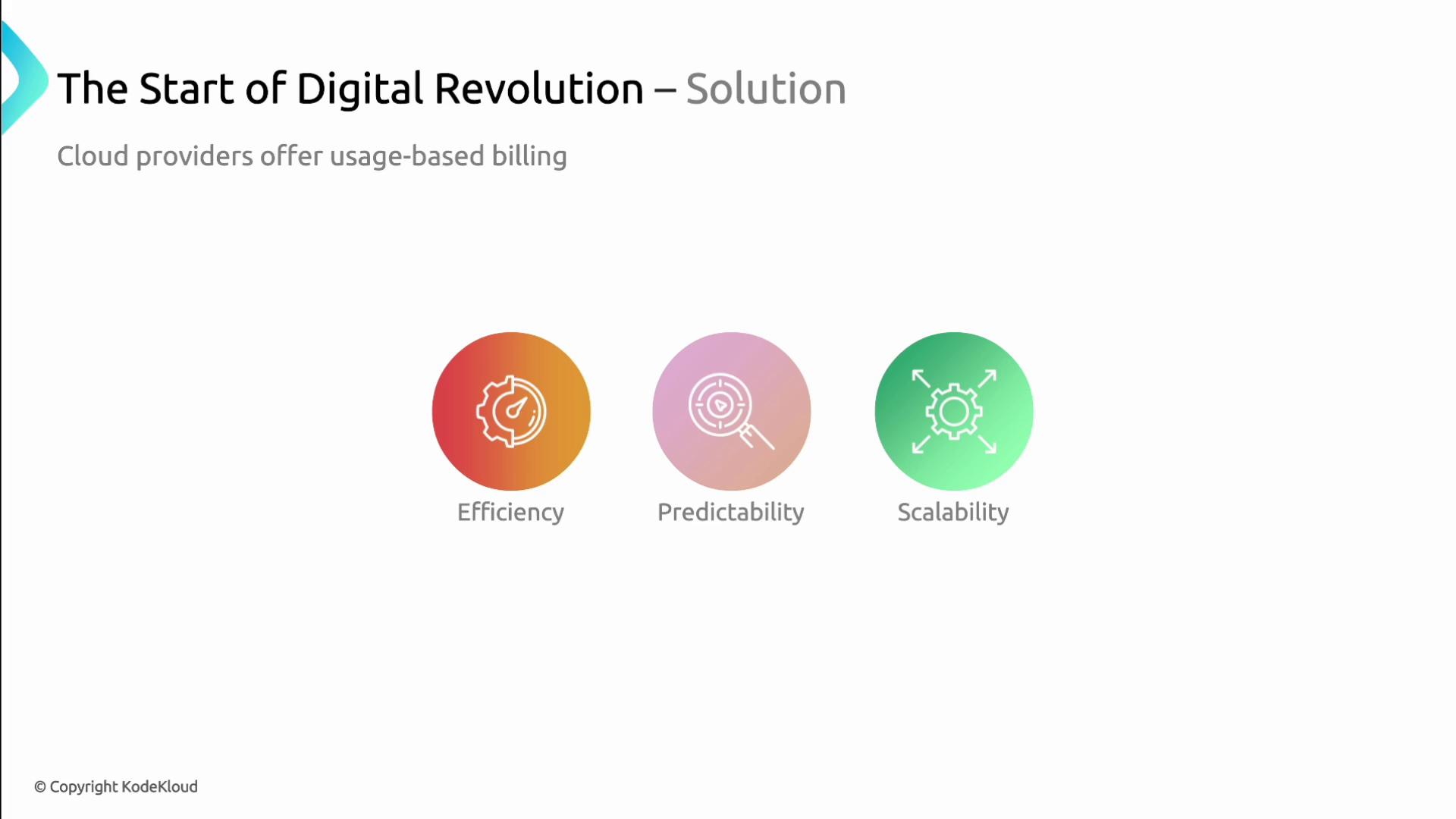AZ900: Microsoft Azure Fundamentals
Cloud Computing
What is Cloud Computing
Cloud computing offers an innovative solution to the challenges faced by modern digital enterprises. Consider the case of Bella Innovation—a company grappling with outdated servers that lead to slow performance and unreliable website access. As their customer base grows, Bella Innovation needs a faster, more scalable, and resilient infrastructure to handle peak traffic.
Did You Know?
Cloud computing operates on a consumption-based model, which means you pay only for the resources you actually use. This approach optimizes costs and improves budgeting predictability.
Cloud computing could be the transformative answer for Bella Innovation. By migrating to the cloud, the company can overcome its current obstacles and ensure that website crashes during peak periods become a problem of the past. Scalability is achieved at the click of a button, allowing the business to efficiently manage sudden surges in traffic while maintaining high performance.

Cloud providers offer a range of solutions that benefit organizations with usage-based billing models. This not only provides enhanced cost optimization but also ensures efficient resource management through predictable billing practices.

By transitioning to cloud computing, Bella Innovation lays the groundwork for a future-ready digital presence—a platform that is resilient, scalable, and cost-effective.

This strategic move not only addresses immediate performance issues but also paves the way for innovation and industry leadership. However, the journey doesn't end with cloud migration. The cloud landscape is vast, and selecting the appropriate cloud model is crucial.
In our next lesson, we will explore the various cloud models:
- Private Cloud: Offers enhanced control and security, ideal for businesses with strict regulatory and privacy requirements.
- Public Cloud: Provides extensive resources and scalability, perfect for high-traffic scenarios and rapid deployment.
- Hybrid Cloud: Combines the benefits of both private and public clouds, delivering flexibility and balance tailored to your specific needs.
Let’s dive deeper into these models to unlock the full potential of cloud computing for transformative business impact.
Watch Video
Watch video content